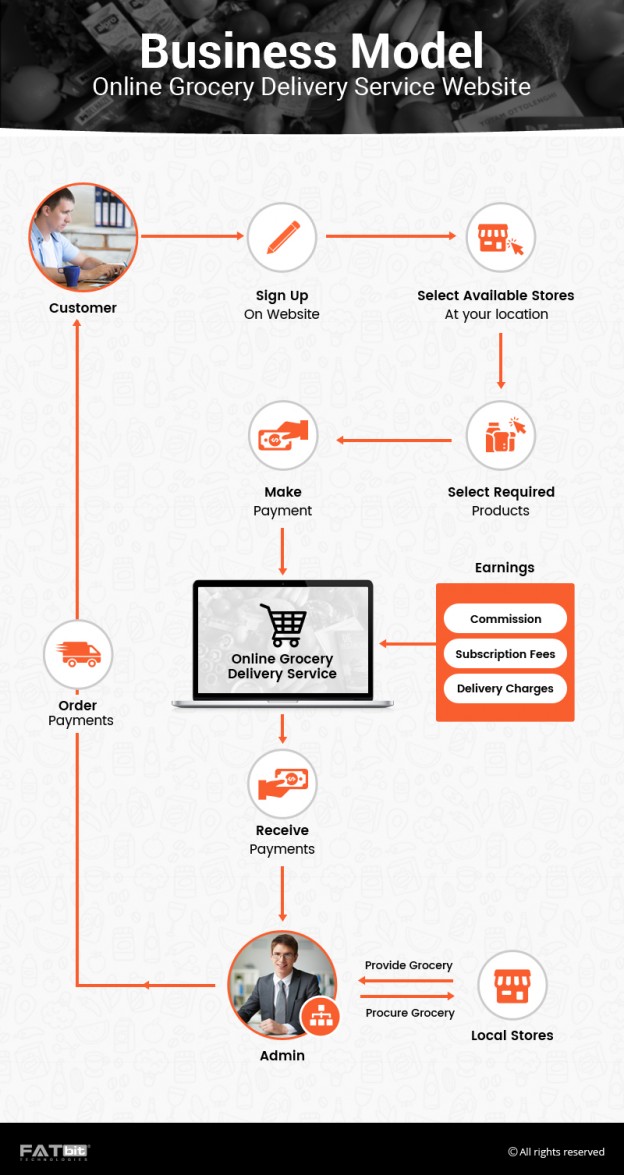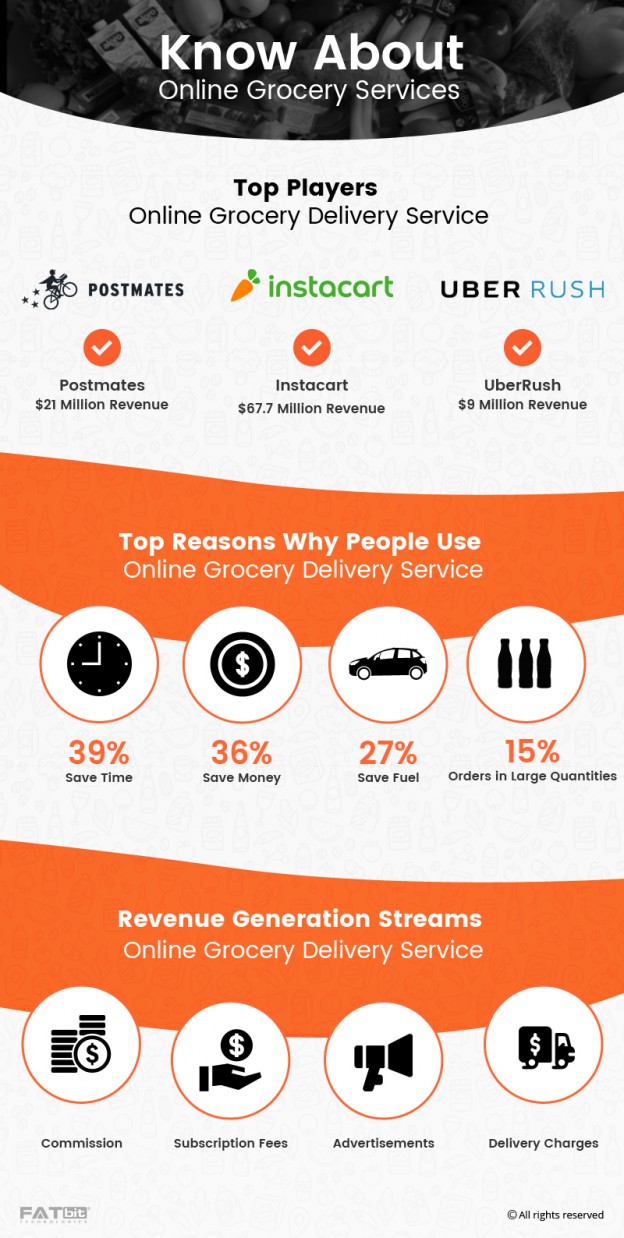How to Start An Online Grocery Business - Business Model, Revenue Model & Key Features


One of the implications of the 2020 pandemic & the resulting lockdown is the surge in online grocery shopping. According to the data from research & polling firm Nielsen and Rakuten Intelligence, online sales of consumer packaged goods that are typically sold in grocery stores grew by 56% in April 2020.
The online grocery delivery industry has thus proliferated. Consumers have transitioned towards quality, convenience, more choices, more speed all at the same time as they don’t have to go trudging around a conventional store.
How to Start A Grocery Delivery Business?

Covid-19 has disrupted the panorama of offline grocery retail & has paved the way for online grocery delivery platforms. These platforms deal with the delivery of unevenly shaped products with many different form factors, multiple storage temperature regimens, short shelf lives, and food packaging constraints about what can be packed with what.
Considering all of the above-mentioned factors we have created a basic flow of information that will help ventures in setting up an online grocery delivery business:
- Form a Legal Entity & Register for Taxes
- Finalize your Business Model
- Choose a Readymade Grocery Solution
Form a Legal Entity & Register for Taxes
Online grocery delivery services need to pay taxes for the online sale of groceries. Hence, as primary steps, a company/business should be legally registered.
Business Model
Grocery delivery consists of vendors listing their products online & buyers purchasing from them. The order then gets delivered to the consumer. However, there are several ways of how this business model works:

Hyperlocal Business Model: You have built a grocery website for grocery vendors from the vicinity. The customer orders & you deliver the order to their doorstep.
Marketplace Business Model: The other alternative is that you mention all the items on your website. The buyer chooses the grocery items & their quantity. You get those from the vendors & then timely deliver them to the customer.
Inventory Based Business Model: In this business model, the inventory is bought and stored by the eCommerce grocery store. The eCommerce company manages a warehouse of the purchased inventory.
Choose a Readymade Grocery Solution
Setting up an online grocery business from scratch is a task. It is time-saving to get in touch with the industry experts & use a ready-made grocery solution that can be customized according to the business requirement.
Revenue Model for Online Grocery Delivery Business
Online grocery delivery businesses primarily generate revenue via commission. There are three prominent ways:
- Commission on Each Transaction
- Commission on Delivery
- Vendor Subscription Fees
Commission on Each Transaction
This is levied on the vendor/seller on every sale they make on the marketplace.
Commission on Delivery
The buyer & the rider are charged a certain amount on the purchase & the delivery of the order.
Vendor Subscription Fees
This is also known as the membership fees which the vendor can pay annually, quarterly, and so on.
Also Read: Online Business Ideas in 2020 That Are Worth Investing Amid the COVID-19 Pandemic
Key Features of an On-Demand Grocery Delivery Model Website
Online grocery delivery which is a pivotal part of an online grocery business has been poised to meet the emerging demands. Listed below are the key features of a grocery delivery website:
The Front End
The home page of the grocery website is also the welcome page. This is where the user lands. It has:
- Page Banner: States the idea of the business.
- Post Login Features: Enables vendors, buyers & admin to login.
- Multi-Store Front: Offers multiple stores to the customers for their varied choices.
- Cart & Checkout: Easily add items to the cart & checkout.
- Multiple Payment Options: A consumer can pay via cash, card or virtual wallets.
- Order Tracking: The order placed can be easily tracked on the map.
The Back End
The backend is where the data is stored. Primarily a database is used to store all the information related to the product order & delivery.

Prominent Names in Grocery Delivery Service Business
The online grocery delivery business is buzzing with a few prominent players. To name a few:
- Postmates
- Instacart
- UberRUSH
Conclusion
The unprecedented times led by the pandemic have positively impacted the online grocery delivery businesses. It is safe to say that the shift in consumer behavior has marked the golden period for grocery delivery marketplaces.
To read a detailed blog on starting an online grocery business.


You have reached the maximum per-minute rate limit.
Try again in one minute.
